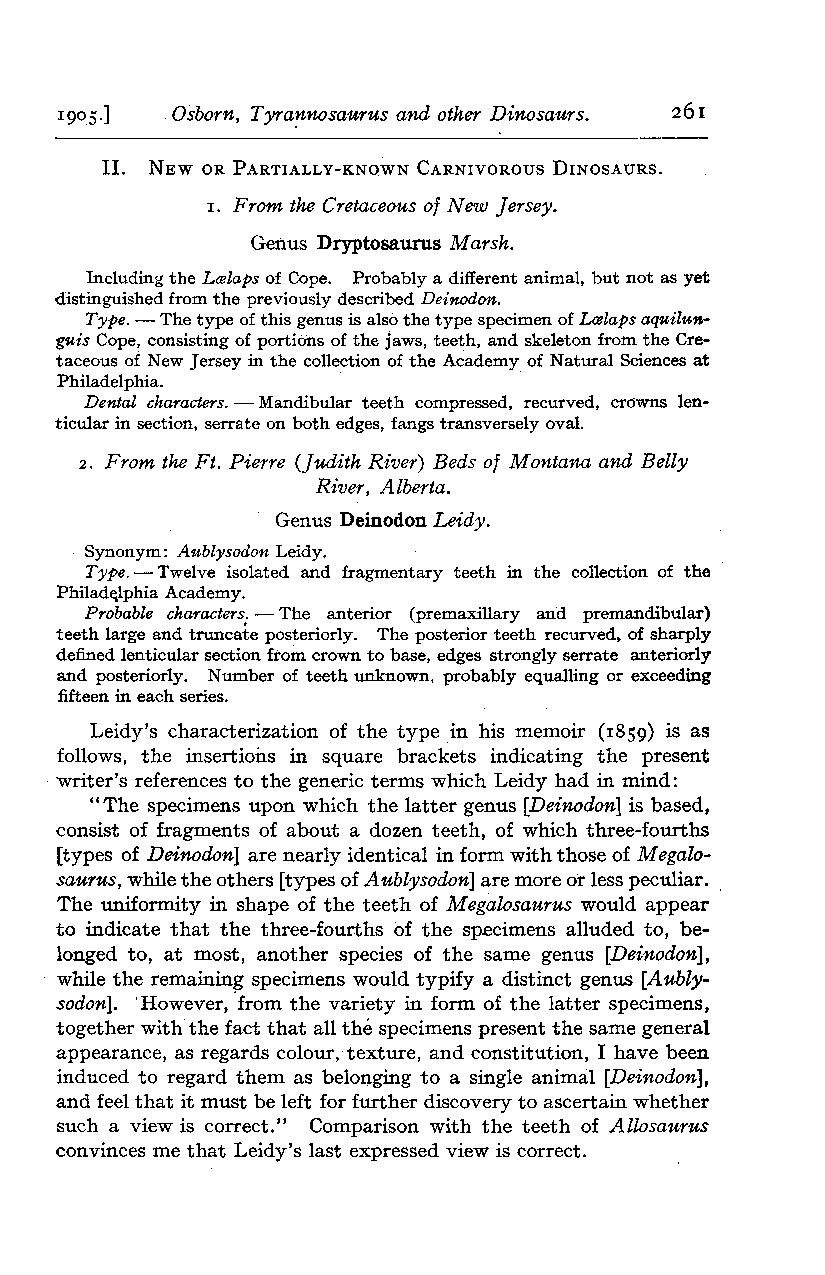II. New or Partially-known Carnivorous Dinosaurs.
1. From the Cretaceous of New Jersey.
Genus Dryptosaurus Marsh.
Including the Lælaps of Cope. Probably a different animal, but not as yet distinguished from the previously described Deinodon.
Type.—The type of this genus is also the type specimen of Lælaps aquilunguis Cope, consisting of portions of the jaws, teeth, and skeleton from the Cretaceous of New Jersey in the collection of the Academy of Natural Sciences at Philadelphia.
Dental characters.—Mandibular teeth compressed, recurved, crowns lenticular in section, serrate on both edges, fangs transversely oval
2. From the Ft. Pierre (Judith River) Beds of Montana and Belly River, Alberta.
Genus Deinodon Leidy.
Synonym: Aublysodon Leidy.
Type.—Twelve isolated and fragmentary teeth in the collection of the Philadelphia Academy.
Probable characters.—The anterior (premaxillary and premandibular) teeth large and truncate posteriorly. The posterior teeth recurved, of sharply defined lenticular section from crown to base, edges strongly serrate anteriorly and posteriorly. Number of teeth unknown, probably equalling or exceeding fifteen in each series.
Leidy's characterization of the type in his memoir (1859) is as follows, the insertions in square brackets indicating the present writer's references to the generic terms which Leidy had in mind:
"The specimens upon which the latter genus [Deinodon] is based, consist of fragments of about a dozen teeth, of which three-fourths [types of Deinodon] are nearly identical in form with those of Megalosaurus, while the others [types of Aublysodon] are more or less peculiar. The uniformity in shape of the teeth of Megalosaurus would appear to indicate that the three-fourths of the specimens alluded to, belonged to, at most, another species of the same genus [Deinodon], while the remaining specimens would typify a distinct genus [Aublysodon]. However, from the variety in form of the latter specimens, together with the fact that all the specimens present the same general appearance, as regards colour, texture, and constitution, I have been induced to regard them as belonging to a single animal [Deinodon], and feel that it must be left for further discovery to ascertain whether such a view is correct." Comparison with the teeth of Allosaurus convinces me that Leidy's last expressed view is correct.

